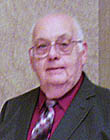|
|
This topic comprises 2 pages: 1 2
|
|
Author
|
Topic: REALLY high gain screen
|
|
|
Paul G. Thompson
The Weenie Man

Posts: 4718
From: Mount Vernon WA USA
Registered: Nov 2000
|
 posted 02-13-2003 01:44 PM
posted 02-13-2003 01:44 PM




What did the picture look like when it was viewed at a sharp angle - say about 45 degrees off center??
There is several advertizement screens that are extremely bright, also. Too bright, in fact. One of those are in the southbound lanes of I-5 one mile from the "Executive washrooms" in the northbound lanes north of Tacoma. I think it was LED's and about 1/2 mile away, the resolution looked better than some drive-in theatre screens. The picture was beautiful! And, I might add this: they were moving scenes such as dancing beer bottles, horseback riding in the country, you name it. Furthermore, the picture did not "fall apart" as the sign was approached.
It looks like the maintenance is very high to keep it running. More often that not, there is a block of lights in that picture that seem to be stuck on one color. Two things come to mind:
(1) That sign must be an electronic masterpiece, and (2) It must really suck the electrical power. If someone told me that sign sucked 3 megawatts of power over a 24 hour period, it would not surprise me.
Even the big ones in Las Vegas would not hold a candle to this one for picture clarity and brightness.
I understand the WADOT tried to get the owners to dim it down a little, as it was a major distraction to the drivers on the freeway, and apparently it has caused some wrecks. On rainy nights when the rain falls like cats and dogs, the reflection on the pavement is so strong you can't see where the hell you are going.
Greg and Jack, you know which one I am talking about. Just exactly, what is that thing? ![[eyes]](graemlins/eyes.gif)
| IP: Logged
|
|
|
|
|
|
|
|
|
|
|
|
Jack Ondracek
Film God

Posts: 2348
From: Port Orchard, WA, USA
Registered: Oct 2002
|
 posted 02-13-2003 06:16 PM
posted 02-13-2003 06:16 PM





quote:
from Michael R...
...upon seeing this I wanted to go grind up some soda cans and repaint the drive in screen in my town.... and I assume that water would... rule out any permanent outdoor setup.
Michael, there used to be a company by the name of Spatz that made a metallized paint for drive-in screens. However, many drive-ins... and now pretty much all of them (now than Spatz is out of business) just use a good quality flat white latex... though a few have their own "secret formulas". Kelly Moore & Sherwin Williams both have good products, which is basically nothing more than the white tinting base they use.
As for using metalized paint, you'd have to be careful not to put it on a screen that wasn't angled to the booth properly. A lot of drive-in screens are installed straight up & down... and if you have a situation like ours, where the booth has been moved, you could have the screen reflecting too much light at the playground, rather than at the cars where you wanted it.
For the most part though, if a drive-in isn't dealing with a lot of ambient light, it's more often a matter of underlamping, infrequent bulb changes and/or shot reflectors that causes the lousy pictures at some places. There are a lot of 'em out there that are using the original reflector that came with the lamp they used to upgrade from carbon... and if it's not always a matter of the owner just being cheap, it's likely he doesn't know any better... they deteriorate so slowly.
(A lot of 'em get cheap pretty fast though, when you suggest they shell out around 3 grand for a new bulb & reflector! ![[Cool]](cool.gif)
| IP: Logged
|
|
Stephen Furley
Film God

Posts: 3059
From: Coulsdon, Croydon, England
Registered: May 2002
|
 posted 02-14-2003 03:57 AM
posted 02-14-2003 03:57 AM




John wrote:
quote:
Kodak once sold a solid aluminized screen for A/V applications known as the "Ektalite" screen. Its size was limited to about 50 x 50 inches since it was a solid material curved in a compound curve to optimize the reflection pattern.
John, we had a couple of those screens in the late '70s, but we did not find them wery successful. There were three main problems:
1. They were quite expensive.
2. The viewing angle was too narrow for the locations where they were installed, of course, this was not a problem with the screen itself, but with inappropriate use of it.
3. The surface marked very easily, and was difficult to clean. This was a major problem when used in a school, where they tended to get covered in fingerprints, not to mention chewing gum, fish and chip grease, vomit ![[Eek!]](eek.gif) and just about anything else you can think of, but would probably rather not. and just about anything else you can think of, but would probably rather not. ![[puke]](graemlins/puke.gif)
We also found that they were unneccessarily bright; we used them with the original 3-button Carousel-S projectors with the 150W A1/216 lamp, plus a few of the newer 2-button ones with the 250W A1/233, and both of these gave an over bright image.
This was the era of the halogen lamp, and projectors were much brighter than the old ones had been, so the screen might have been more useful if it had been available ten or twenty years earlier. About the only time we found it really useful was when using the 'epi' part of an ancient Ross eipdiascope, dating from about the '40s, which gave an image so dim you could hardly see it on any other type of screen. The 'dia' part was no longer used, but was made to take the old 3 1/4 inch glass slides, like cinema slide lanterns.
The best use I saw for these screens was on exhibition stands, where there were very high ambient light levels.
| IP: Logged
|
|
|
|
|
|
|
|
|
|
|
|
|
|
|
|
All times are Central (GMT -6:00)
|
This topic comprises 2 pages: 1 2
|
Powered by Infopop Corporation
UBB.classicTM
6.3.1.2
The Film-Tech Forums are designed for various members related to the cinema industry to express their opinions, viewpoints and testimonials on various products, services and events based upon speculation, personal knowledge and factual information through use, therefore all views represented here allow no liability upon the publishers of this web site and the owners of said views assume no liability for any ill will resulting from these postings. The posts made here are for educational as well as entertainment purposes and as such anyone viewing this portion of the website must accept these views as statements of the author of that opinion
and agrees to release the authors from any and all liability.
|

 Home
Home
 Products
Products
 Store
Store
 Forum
Forum
 Warehouse
Warehouse
 Contact Us
Contact Us




 Printer-friendly view of this topic
Printer-friendly view of this topic





![[eyes]](graemlins/eyes.gif)



![[Big Grin]](biggrin.gif)
![[Cool]](cool.gif)

![[Eek!]](eek.gif) and just about anything else you can think of, but would probably rather not.
and just about anything else you can think of, but would probably rather not. ![[puke]](graemlins/puke.gif)

![[Smile]](smile.gif)




